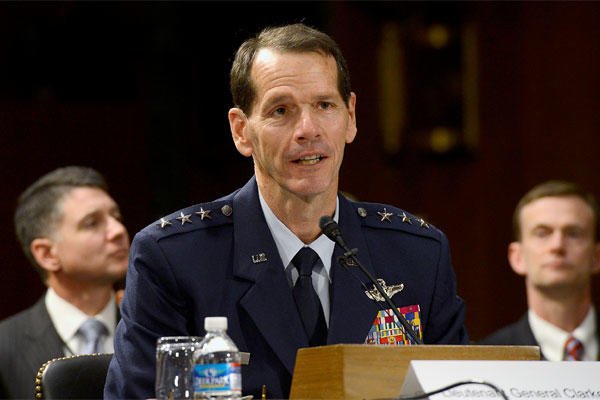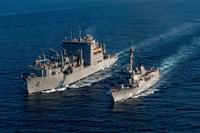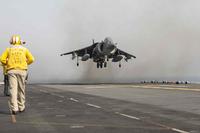The director of the Air National Guard said he opposes any plan that would simply shrink the Air Force's active-duty end strength by moving more personnel into the reserve components to save money.
When asked whether he agrees with calls to expand the ranks of part-time airmen as a share of the overall force, Lt. Gen. Stanley Clarke, director of the Air National Guard, said his component relies on the active-duty force's institutional knowledge for buying weapons and equipment, training and educating troops, and other missions.
"I'm not opposed to moving force structure over into the Guard and Reserve, don't get me wrong," he said in an interview with Military.com after a breakfast on Wednesday at the National Press Club in Washington, D.C. "I would be concerned, though, if we draw the regular Air Force down too low that there are some things that would be thrown out with the bathwater."
The National Commission on the Structure of the Air Force, a congressionally mandated panel, earlier this year concluded that the Air Force could save $2 billion a year by shifting 36,600 personnel from the active component to the Air Force Reserve and Air National Guard. Lawmakers are expected to debate that recommendation and the panel's other findings during a hearing next week on Capitol Hill.
Like his active-duty counterparts, Clarke said he disagreed with two of the commission's larger proposals, including the "move of force structure" from the active component into the reserve components, as well as the abolition of the Air Force Reserve Command headquarters.
"It can't just be about cost," he said. "If we keep making the Air Force smaller altogether, we all tend to get smaller. That would be my concern."
The Air Force and other branches of service are downsizing amid automatic budget cuts known as sequestration and the winding down of the U.S.-led war in Afghanistan.
The Defense Department's budget for fiscal 2015, which begins Oct. 1, requests funding for 483,000 airmen, including 310,900 in the active component, 105,000 in the Air National Guard and 67,100 in the Air Force Reserve, according to budget documents. That's a decrease of about 15,000 airmen, or 3 percent, from this year.
In its Jan. 30 report, the commission recommended for the Air Force to change its mix of full-time and part-time personnel, from the current breakdown of 69 percent active-duty airmen and 31 percent reservists, to 58 percent active-duty airmen and 42 percent reservists. The shift would move about 36,600 personnel into the reserve components, including 22,500 into the Air National Guard and 14,100 into the Reserve.
It would also "yield savings of perhaps $2 billion per year in manpower costs with no reduction in Total Force end strength," the document states.
The eight-member panel was chaired by Dennis McCarthy, former assistant secretary of defense for reserve affairs, and Erin Conaton, former undersecretary of defense for personnel and readiness.
Both are scheduled to testify on Tuesday before the Senate Armed Services Committee, chaired by Sen. Carl Levin, D-Mich., along with other commission members. Additional witnesses include Air Force Secretary Deborah Lee James and Air Force Chief of Staff Gen. Mark Welsh.
"Going forward, there's no doubt in my mind that our Air Force is going to rely more, not less, on our National Guard and Reserve forces," James has said. "This makes sense from not only from a mission standpoint, but from an economic standpoint.
-- Brendan McGarry can be reached at brendan.mcgarry@monster.com


























